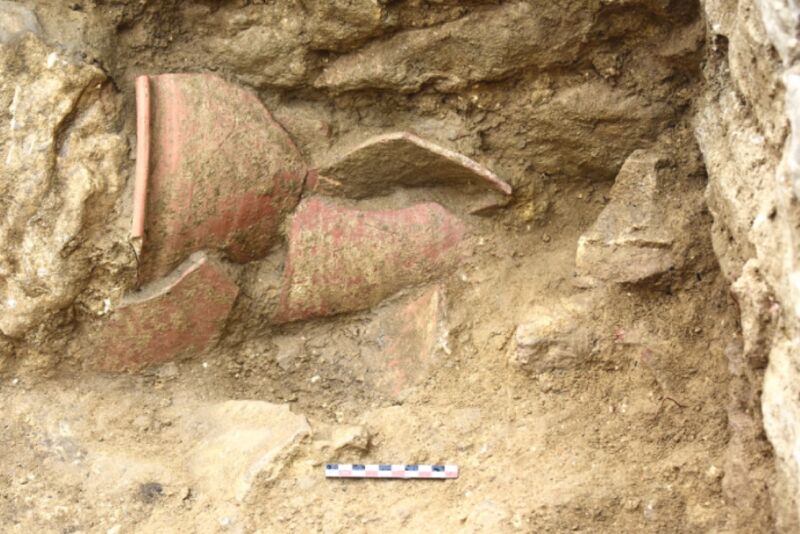This Ancient Roman ceramic pot was probably a portable toilet, study finds

Enlarge / Rim fragments of a chamber pot being excavated at a Roman villa site in Sicily. (credit: R.J.A. Wilson)
Ancient Roman archaeological sites are littered with ceramic pots, and it can be challenging to definitively determine the purpose of any given pot-for instance, if it was used for storage or as a portable toilet (chamber pot). Researchers from the University of Cambridge and the University of British Columbia have now analyzed the residue on one such ceramic pot and identified the eggs of intestinal parasitic worms commonly found in feces, according to a new paper published in the journal Archaeological Science Reports. That's strong evidence that the 1,500-year-old pot in question was most likely used as a chamber pot.
Conical pots of this type have been recognized quite widely in the Roman Empire, and in the absence of other evidence, they have often been called storage jars," said co-author Roger Wilson of the University of British Columbia. "The discovery of many in or near public latrines had led to a suggestion that they might have been used as chamber pots, but until now, proof has been lacking."
Archaeologists can learn a great deal by studying the remains of intestinal parasites in ancient feces. Just last month, we reported on an analysis of soil samples collected from a stone toilet found within the ruins of a swanky 7th-century BCE villa just outside Jerusalem. That analysis revealed the presence of parasitic eggs from four different species: whipworm, beef/pork tapeworm, roundworm, and pinworm. (It's the earliest record of roundworm and pinworm in ancient Israel.)
Read 9 remaining paragraphs | Comments